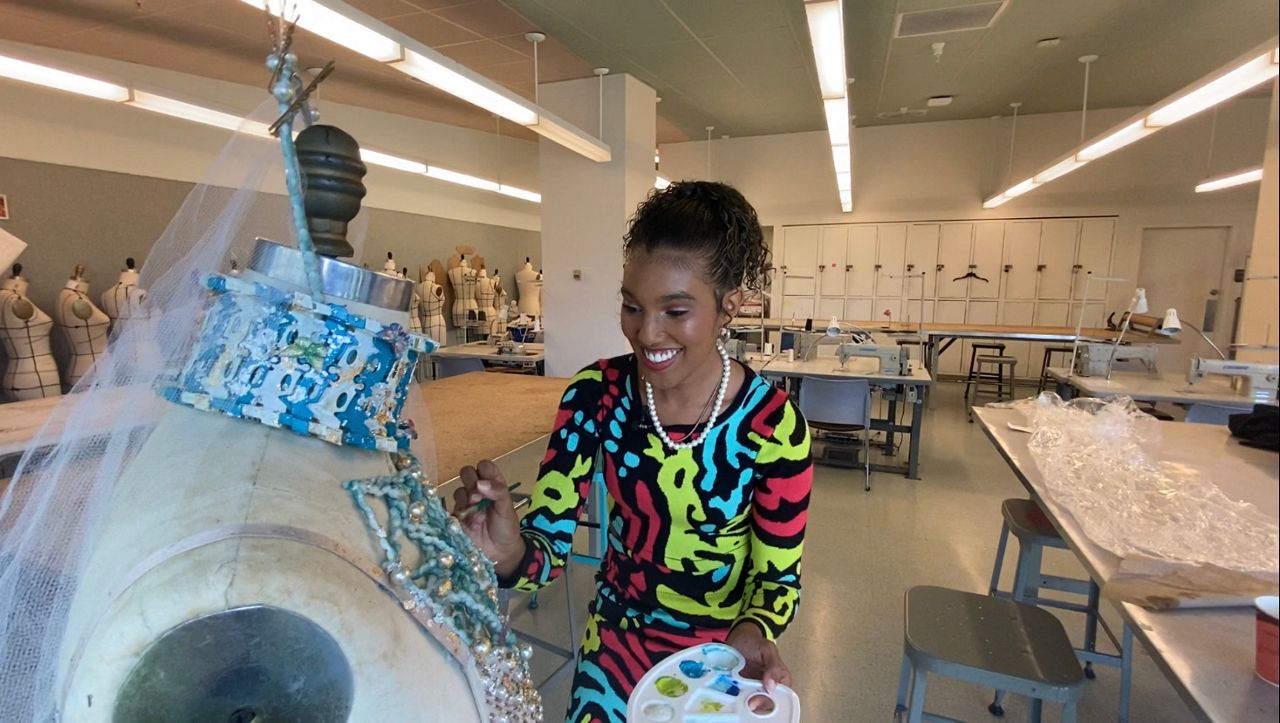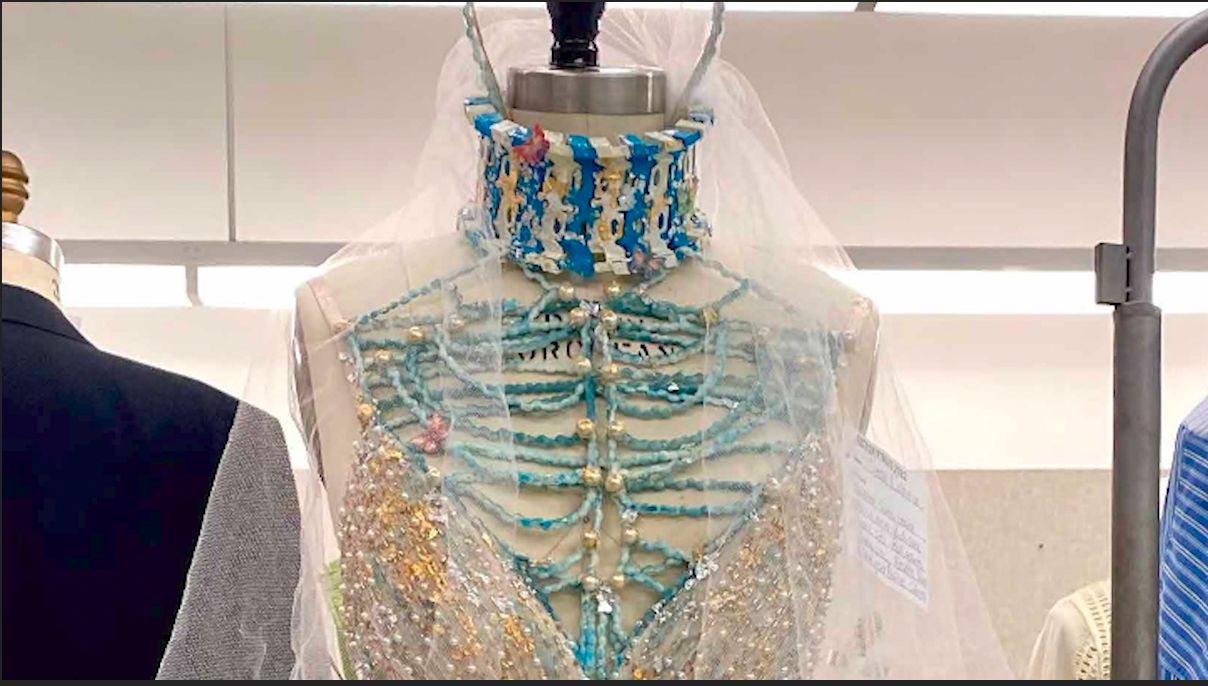CINCINNATI — Halloween will kick off seasonal consumer spending with the National Retail Federation expecting Americans to spend $10.6 billion on candy, decorations and costumes. Come November though, most of those outfits will end up in the trash, despite only getting one or two wears.
The trend mirrors American fashion consumption at large, with the EPA estimating the country throws out 11 tons of textiles every year, with most articles of clothing worn an average of seven times. It’s an issue fashion students at UC’s College of Design, Architecture, Art and Planning are grappling with as they prepare to enter the industry.
“There’s too many clothes in the world, which is kind of a scary thing for a fashion designer to say,” said Cierra Calmeise, a junior at DAAP. “So instead of creating more, I feel like it’s so important to look around and use what we already have.”
It's the philosophy behind her latest design, a runway piece for the St. Vincent DePaul RetroFittings fashion show, one of the organization’s largest local fundraisers.
“I wanted a challenge,” she said. “I was like, ‘What’s the weirdest things that people wouldn’t think to use?’ I’m going to find a way to use them.”

Calmeise said she spent about $20 going through the thrift store collecting supplies to put together into a costume design that exemplified the theme of “hope.”
“My cart was just filled,” she said. “I had broken umbrellas, a Santa beard, and just anything you could think of, I just piled it in there.”
The base was a white dress, Calmeise augmented with yarn from the Santa beard arranged to form a sort of rib cage in the front. Then she made a veil from loose tulle, a headband, and bobby pins, completing the look with a choker made from a child’s racetrack and a few layers of paint.

“It all came together really nicely," she said. "I’m really happy with it."
Not only did the piece win first place in the RetroFitting competition, but Calmeise said it reinforced her passion for sustainable fashion.
“Just slowing down and looking at what you have is extremely important because in this world, there’s so many materials and stuff already here,” she said.
Costuming, Calmeise believes, is a good place to start and she can’t imagine a better time to experiment than October.
“When people do Halloween costumes, they want to stand out they want to have the best costumes and they want to be seen and they want to be heard and I think it just takes a little bit of creativity and a little bit of time,” she said.
For those who may not feel ready or have the time to DIY their clothing to that extent, Calmeise recommends finding costumes from your closet, a thrift store, or even swapping outfits and ideas with friends.
“The world around us is our materials and we just gotta dive in and go into the unknown,” she said.
Calmeise isn’t sure where she wants to take her fashion career after graduation, but she hopes more opportunities for sustainable design are on the horizon, both through costuming and everyday wear.
“I’m not exactly sure what I’m gonna do yet, but I’m excited for what’s to come,” she said.



